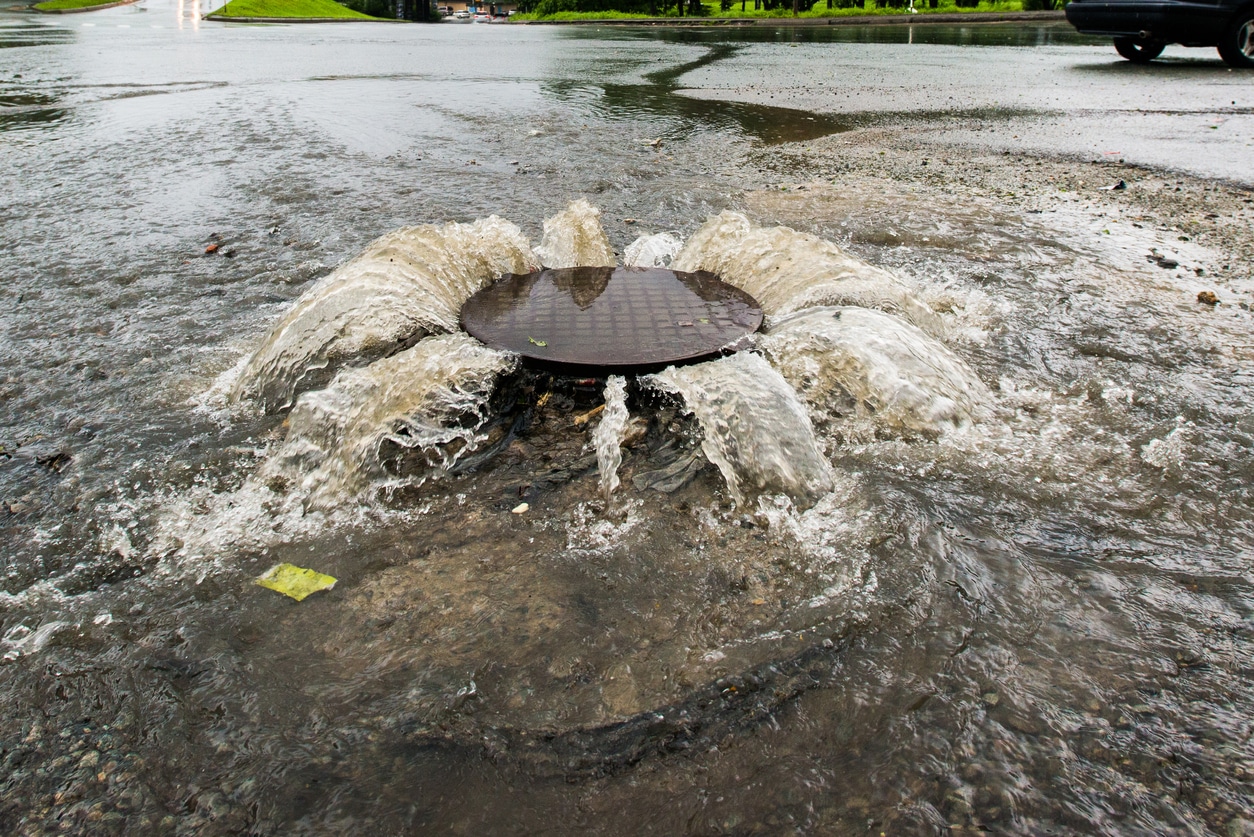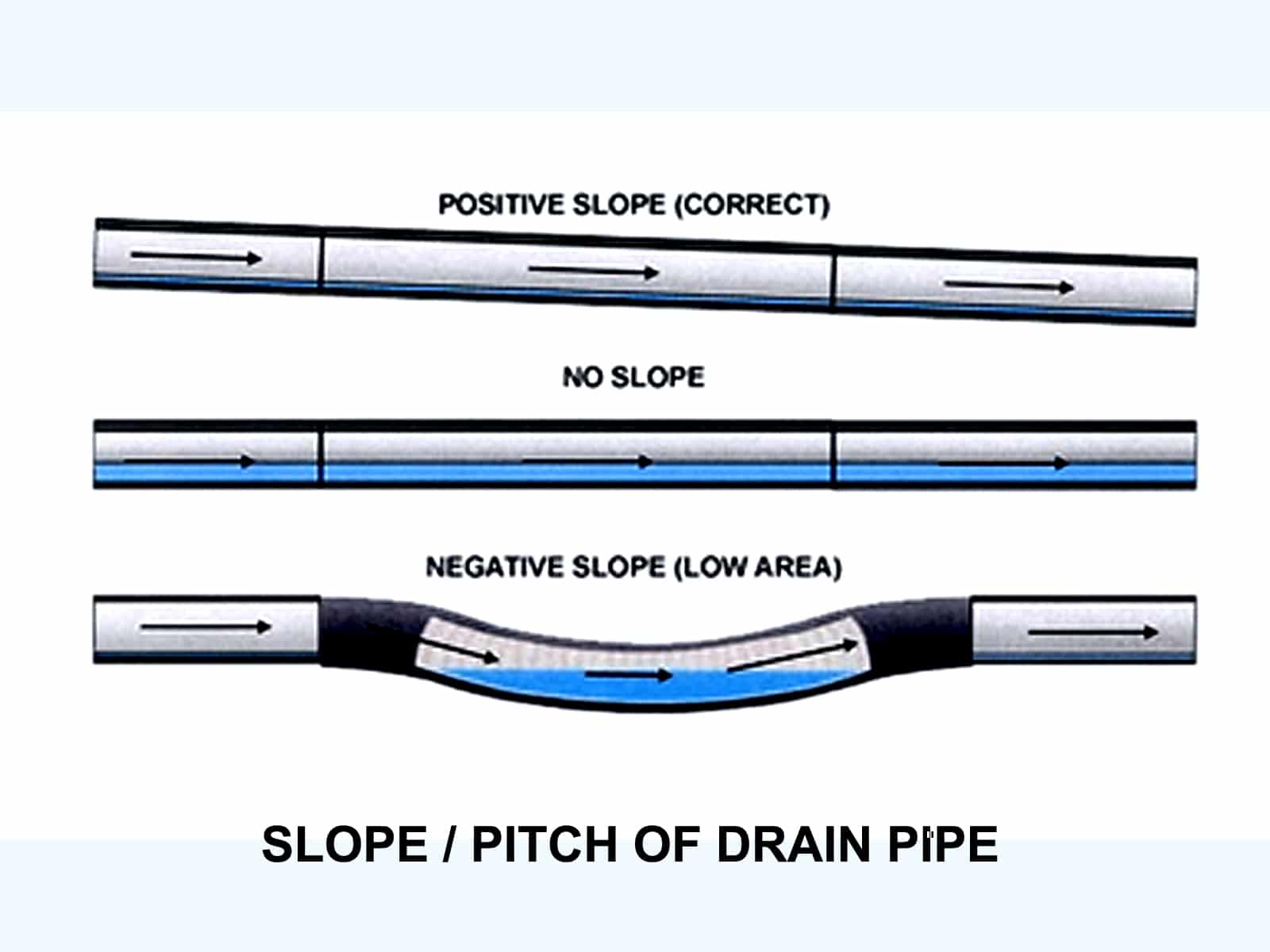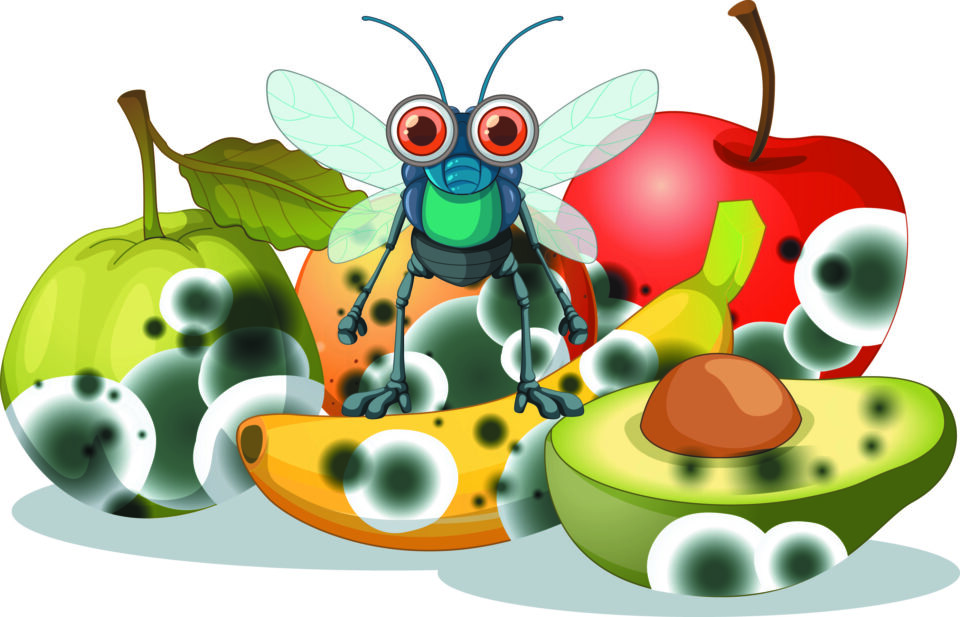One of the worst plumbing nightmares homeowners dread is dealing with a city sewer backup. While we always try to be on top of everything regarding home maintenance, it’s very typical yet unfortunate that we forget the drainage system and only think of it when havoc strikes.
This situation isn’t only unpleasant but also unhygienic and hazardous, and causes major damage to your home. With all the biological contaminants and chemicals in a sewer line, having them pushed back and out of your basement floor creates major issues that are expensive to address.
Of course all of the many homeowners we’ve helped during a sewer backup always want to know the exact causes and have a permanent remedy. Your home’s drain system indeed handles more than wastewater. It also catches grease, hair strands, soap, laundry detergents, shampoo, and many more. All these eventually combine to clog the pipes. Having timely maintenance can always clear the system before a blockage occurs. Your city or public sewer system works much the same way. Likewise, even your public sewer gets backed up.
However, when a city sewer backup occurs, you’re now dealing with a more severe issue whose cause goes beyond your home’s sewer system. More often than not, the problem involves more complicated issues, such as the flow exceeding the city sewer’s capacity. Answering the question of is the city responsible for sewer backups depends on the cause of the backup, and probably how local laws regarding responsibility are written.
What Causes a City Sewer Backup?
1. Heavy and Sudden Rains are common causes of sewer backups
The sewer system installed in homes handles sewage, and in some cases not rainwater. If a heavy downpour or rain finds its way to the pipes, it enters the public sewer at a breakneck speed, almost 11 times more than the flow of the sewage the lines can handle. The waste and rainwater can get pushed back up and end up backflowing out of your basement drains or plumbing.
While it’s the municipality’s responsibility to handle sewer drainage pipes under the streets, you’re accountable for the portions of pipes from your basement that connect to your home. With that said, in most cases of a sewer surcharge the home sewer is without defect. The surcharge is the direct result of a city sewer backup.
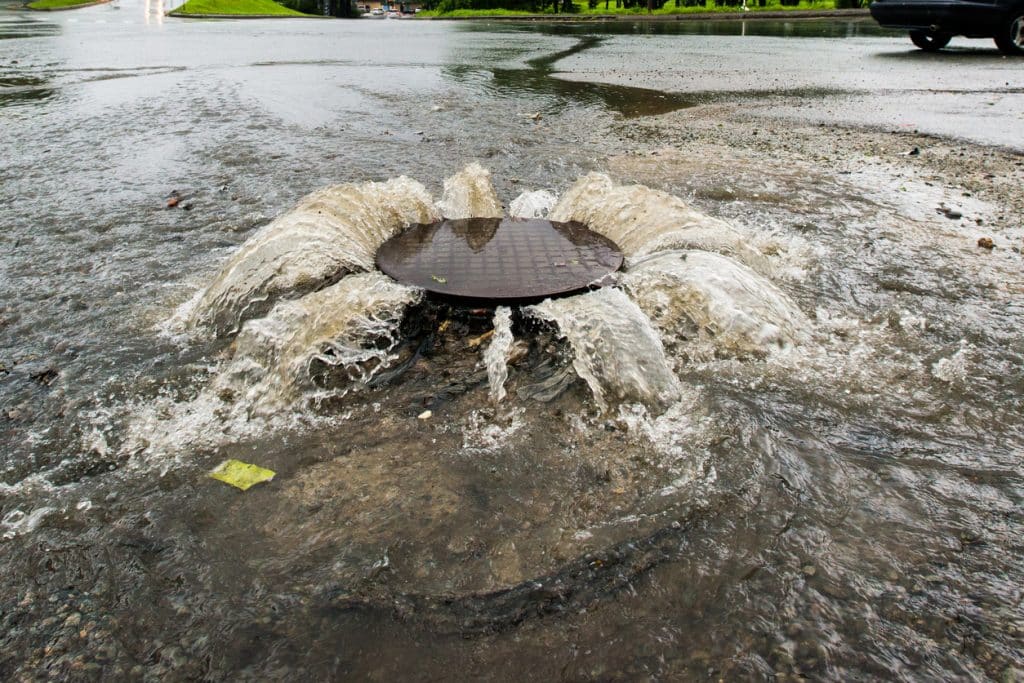
2. Undersized City Sewers
Undersized sewers are an under-design issue. When the pipe is too small, the water gushes in faster while the main pipe struggles to carry it away.
If the pipe used cannot serve the drainage intensity, it is only a matter of time before things get exasperated.
3. Defective or Broken City Sewers
Durable materials like PVC, clay, or cast iron make up sewer pipes. However, it doesn’t mean they last forever. As time goes by, they inevitably deteriorate and collapse. These dilapidated pipes can cause sanitary sewer backups, basement flooding, and overflows. In some cases, much older city sewers were constructed out of red bricks.
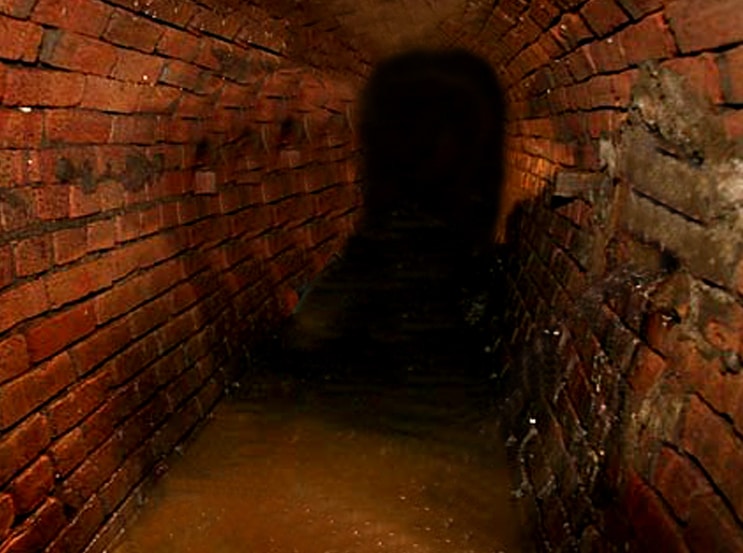
If your home is connected to an aging sewage system, you will likely experience city sewer backup.
4. Wrong Sewer Installations
The city’s drainage system channels a large volume of waste. If poorly installed, the drainage will automatically under-perform, and soon we’ll be glaring at problems like a city sewer backup. A wrong sewer installation can also be caused by poor plumbing practices when a house sewer is connected to a city sewer.
Fortunately, a wrong installation is the easiest to fix. Simply ensure quality assurance during installation. Use the right machinery, follow correct standards and specifications, and use suitable methods.
It’s always advisable to avoid fieldwork during wet conditions. Drainage installation, by extension, is one of the activities you need to avoid. The main reason is that wet conditions cause soil compaction, whose ripple effects include impeded percolation and infiltration.
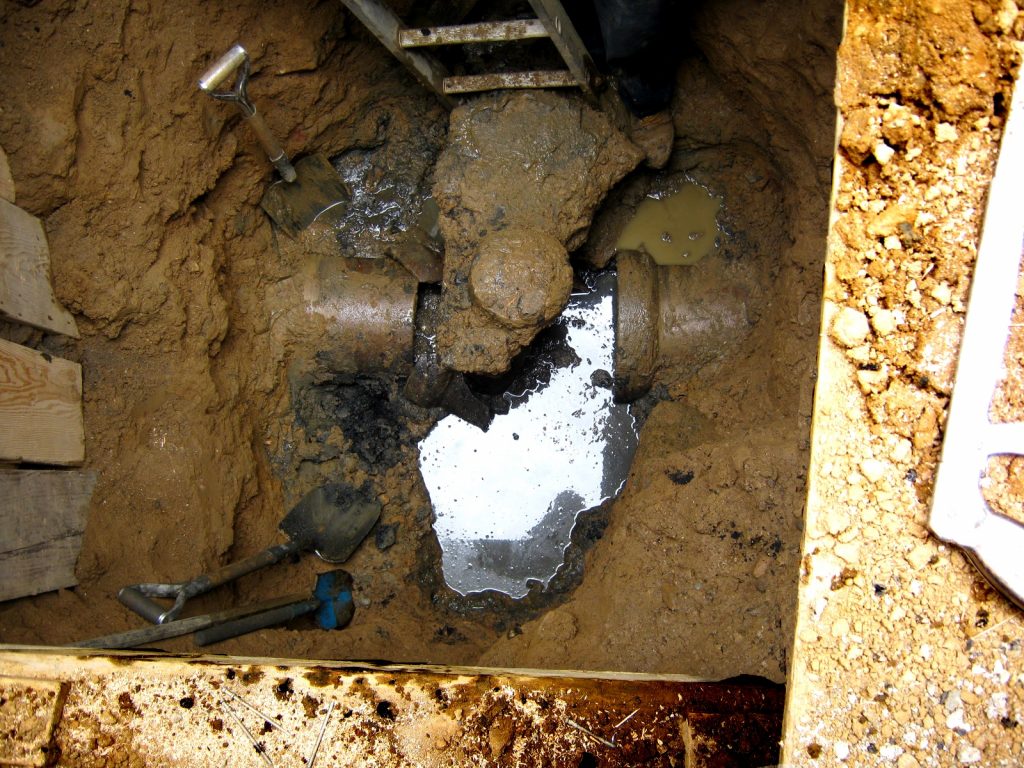
5. Overdevelopment
In urban areas, there is accelerated wear and tear on the ground due to the weight and volume of passing traffic. Some locations, like motorways, are more exposed to these nuances of industrialization.
For example, if a fleet of heavily loaded trucks passes through a specific road daily, the road will eventually take a hit. If pipes are beneath, a pipe fracture or collapse is one of the accidents likely to happen soon.
It then becomes a drainage issue, which may lead to a sewer backup in your home.
Overdevelopment is also associated with flooding because of the high likelihood that the interconnected drainage systems don’t always channel away the excess water, like a heavy downpour, properly. In most cases, when the rains subside, so do the city sewer backups. Overdevelopment results in a city sewer being asked to handle more water than it was designed to handle.
In overdeveloped regions, drainage maintenance isn’t always done as required because of logistics. It takes a major crisis to realize that the drainage pipes are old and defective hence the need for replacement.
Detecting a City Sewer Backup
1. Slow Drainage
Unless there’s a sudden cause for a city sewer backup, most people always miss the signs at the early stages. Going forward, when you notice slow drains on all the drains in your home, you need to call for help as soon as possible. One of the 1st steps an experienced drain tech may take is to open a city sewer manhole in the roadway to ensure it is flowing properly.
If the slow drainage occurs on one drainage system, like the kitchen sink, then maybe it’s a simple blockage caused by hair, grease, or anything that may have found its way through. However, it’s not common for all the drainage outlets in the house to experience slow drainage all at once.
2. Toilet Backups
While you should take all sewer backups seriously, a toilet backup is the rarest. For instance, there’s a likelihood that all homes, at some point, may have experienced slow drain or kitchen sink blockage. However, what are the odds that you experience such with the toilet? A toilet backup is typically the result of misuse – flushing items down the toilet not intended for your drain system. One common non-flushable item is a wet wipe.
Also, considering the biohazard human waste that goes into the toilet, you need to get professional help before the situation gets out of hand.
Preventing Sewer Backups at Home
1. Sewer Line Inspections
Get a professional to look for cracks, blockages, or any signs of damage in your sewer line.
2. Check What Goes Down the Drain
There are specific wastes that the sewer system is meant to carry, like water and human waste. Household wastes, mostly solid materials like food, shouldn’t go down the drains. Oils and grease solidify and end up clogging the pipes.
3. Replace Old and Faulty Sewer Lines
The drainage pipes are durable but wear out with time. When their time is up, have a professional replace them.
A Conclusion About City Sewer Backups
Is New York City responsible for sewer lines? Yes, they are when it involves the public main sewer lines. However, the property owner is always responsible the the integrity and functionality of their home sewer and drain system.
Cleaning your house sewer is not always the solution. It would be best if you had a permanent fix to a city sewer backup. Balkan is a sewer valve expert who fixes sewer backups and other plumbing problems like clogged pipes, replacements, and maintenance.
The Balkan family is proud to have served the NYC area for over 70 years, and a list of over 90,000 satisfied customers. We are available seven days a week and charge standard rates even after hours. Balkan is The Team You Trust.

